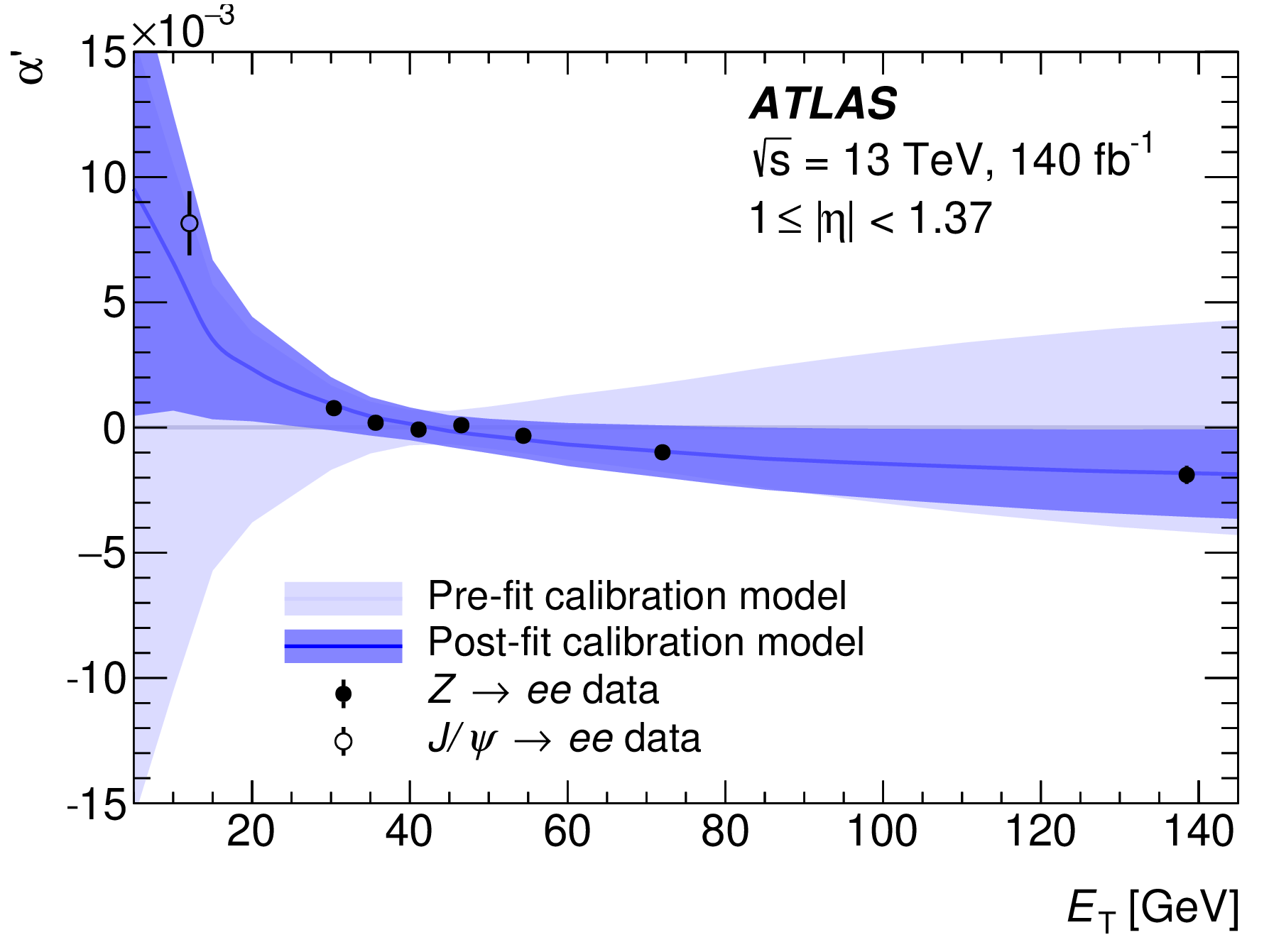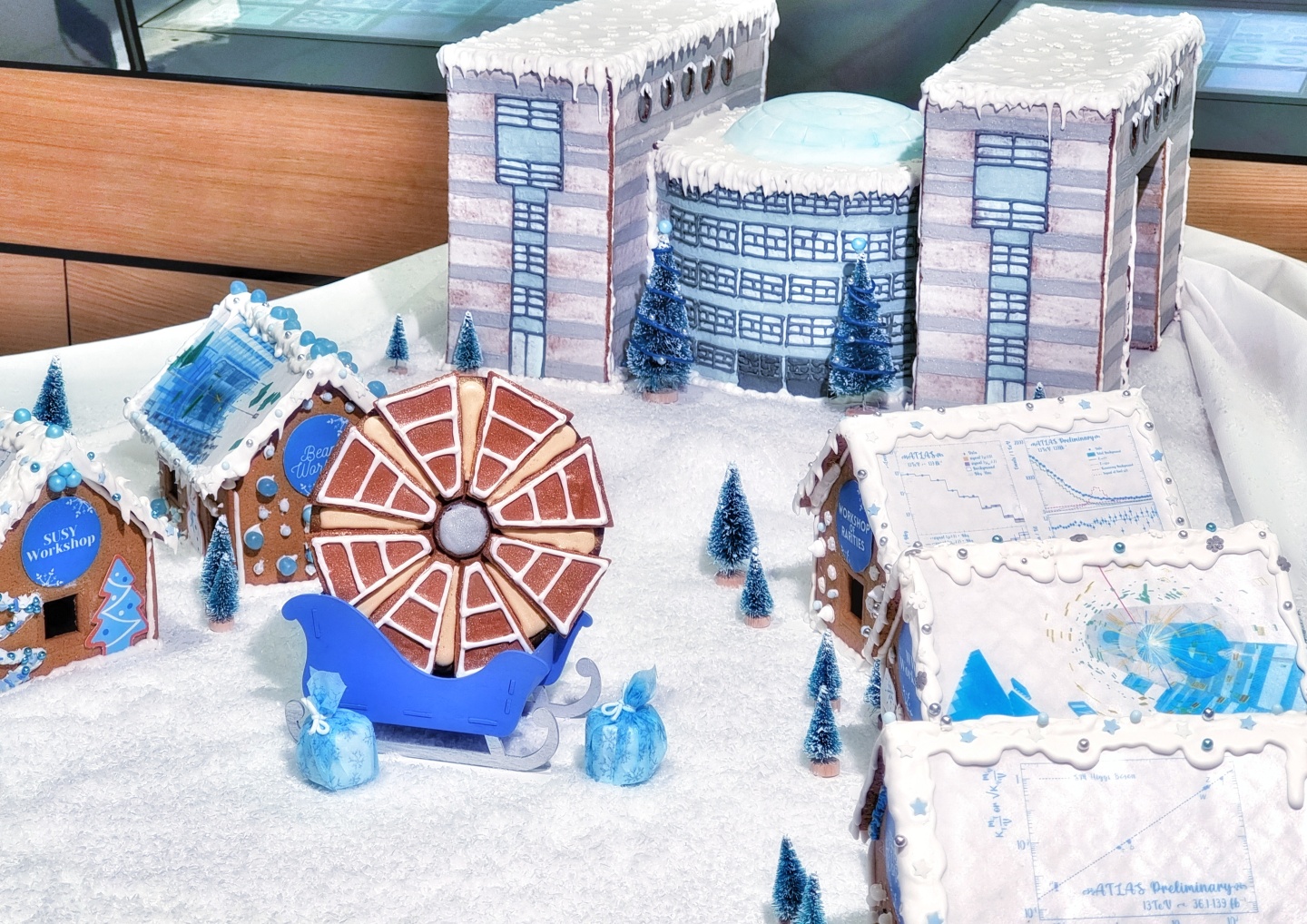New neighbour for ATLAS Tilecal prototypes
6 August 2015 | By
There's a new resident in ATLAS' Tile Hadronic Calorimeter (Tilecal) development laboratory: the last surviving UA2 central calorimeter module. After years at CERN's Microcosm exhibition, the module has found a new home next to prototype ATLAS Tilecals. Side-by-side, they illustrate the progress in sampling organic scintillator calorimeters over the past 35 years.

From 1981 to 1990, the UA2 experiment was one of the two main detectors on CERN's flagship accelerator, the SPS. At its heart was the central calorimeter, made up of 24 slices – each weighing four tonnes – arranged like orange segments around the collision point. Once UA2 was taken offline, 23 of the slices were dismantled and their materials repurposed – leaving one slice for the history books.
Both the UA2 and ATLAS Tile calorimeters were designed by Otto Gildemeister. "It was nice to visit the well-conserved UA2 calorimeter 'orange slice' module which, after so many years, still appears quite familiar to me," said Gildemeister, during a recent visit of the ATLAS and UA2 calorimeter modules. "To see it alongside the present and future ATLAS Tile Calorimeter developments was touching."
"Otto's design of the UA2 calorimeter inspired many of the Tilecal developments, such as the calibration systems concept," said Ana Henriques.
These developments are all part of continuing work of the ATLAS Tilecal Project. Hall 175 – the Tilecal technical development laboratory – regularly performs tests and calibration measurements, using a real size spare modules and a replica of the calibration systems used in the ATLAS experiment. "New Tilecal electronics – currently being developed for the ATLAS phase 2 upgrade – are being assembled and tested in Hall 175 by Tilecal collaborating institutes," said Irene Vichou, ATLAS Tilecal Project leader. "This autumn, they will be installed along the SPS H8 beam line for tests, leading up to their installation in the cavern around 2023."

"Otto's design of the UA2 calorimeter inspired many of the Tilecal developments, such as the calibration systems concept," said Ana Henriques, who has been involved in the Tilecal from the early days of the project. "We also profited from the UA2 calorimeter infrastructure. For example, we used UA2 photo-multipliers in the various Tilecal prototypes that we tested at the SPS beam lines in 1993-1995." The Tilecal geometry represents a natural evolution of the UA2 calorimeter concept. For example, the Tilecal has scintillating tiles oriented perpendicular to the colliding beams instead of the traditional parallel orientation. It also uses wavelength-shifting fibres instead of light-guide plates, and features more advanced photo-detectors and electronics.
The ATLAS Tilecal consists of three cylinders, a central barrel and two moveable extended barrels made of 64 modules each. The overall weight is around 4,000 tonnes; it is approximately 8 m in diameter, 12 m long and has 10,000 readout channels. It was assembled in the ATLAS cavern in 2004-2006, and the first signals from cosmic ray muons were acquired in 2005. Since then, the detector has been commissioned using cosmic rays and brought into full operation, together with the other ATLAS detector systems. During LHC collisions, the Tilecal provides precise measurements of hadrons, jets, taus and missing transverse energy, together with the ATLAS electromagnetic Liquid Argon calorimeter.



